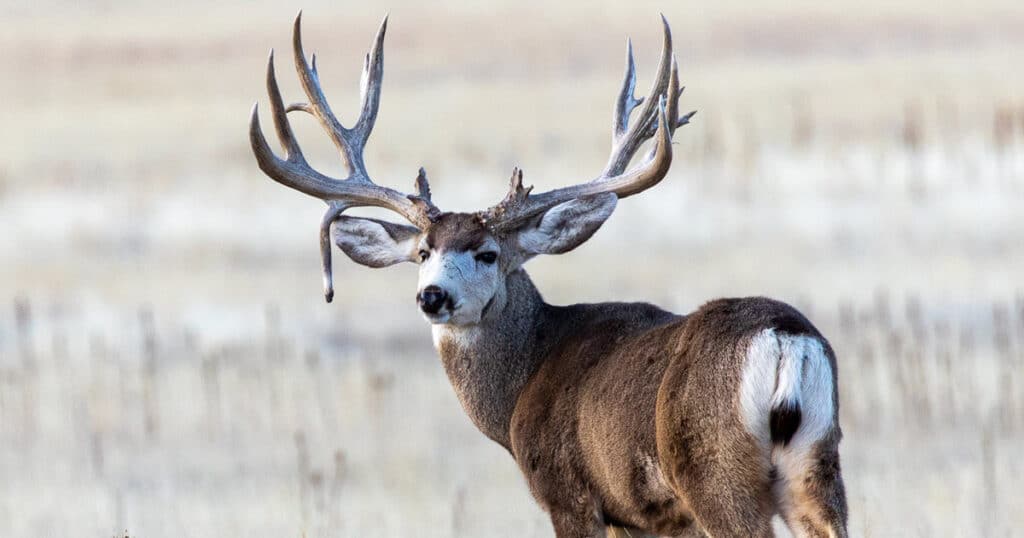Deer hunters are always looking for prize animals that they can take down. And an exceptional or unusual antler rack is always a bonus. But you’ve got to learn about your prey first. Some of the most highly sought antlers include drop tines. But what is a drop tine deer, and why do some deer grow antlers in this unusual way?
A drop tine deer is a deer with any antler that points down instead of up (the typical direction).
Let’s talk about this phenomenon, why it occasionally occurs during antler growth, and whether the fact drop tines are rare makes drop tine bucks more valuable to hunters.
What is a Tine on a Deer’s Antlers?
Tines are the branches on a deer’s antlers. Antlers grow from the frontal pedicle on the deer’s head, and they’re made of bone.
In most deer species, only males grow antlers. Reindeer and Caribou are the only exception.
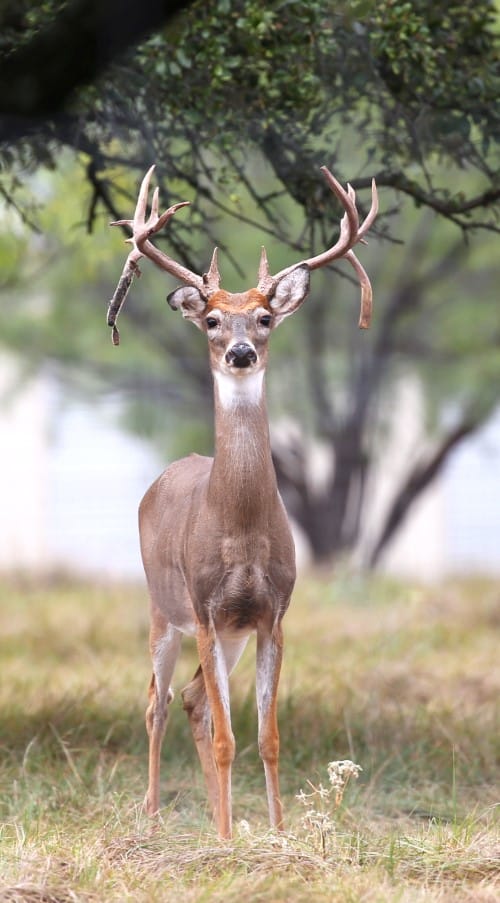
The antlers usually start to develop in the form of buttons, and this happens when the fawn is about four to five months old. Of course, deer shed and re-grow their antlers once a year.
The form, size, and appearance of a deer’s antlers are impacted by a variety of circumstances. Examples include genetics, age, and nutrients.
Experts have given names to some of the main tines on a deer’s antlers. These include:
- the brow tine
- surroyal tine
- tray tine
- bay tine
The brow tine is the area from which we see initial branching of the first antler.
The bay tine is the second point where we see branching off.
The tray tine is the third location where branching off will start.
Lastly, the surroyal tine emerges from an independent tine on the antlers.
Drop Tine Antler Causes
A deer’s genes are the primary cause of drop tine development. In rare cases, abnormal antler development, including a drop tine, may be a result of earlier injuries.
It seems that if a deer is going to get a drop tine, or at least if a hunter will see them, it will be later in life (for example, when the buck is older than six years old).
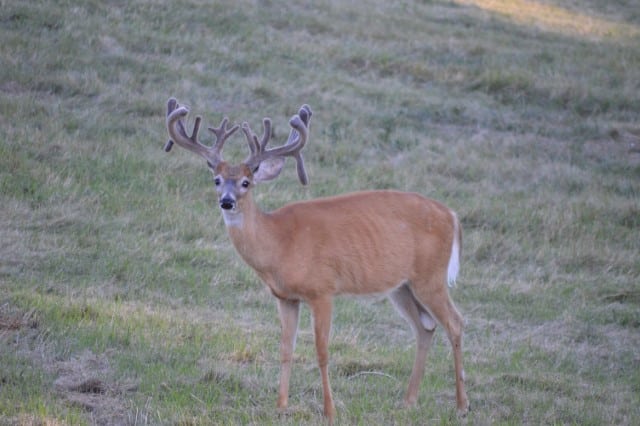
In some cases, deer may develop tines emerging from other areas of its skull. If this happens, it’s because of collagen. Specifically, collagen fibers.
This can happen when a regular antler tine is damaged. When an antler tine grows, there is velvet enveloping it.
If it is damaged, the collagen fibers in the tine may get detached and spread to other areas of the skull.
In order for a deer to be considered a drop tine, the tine must travel down from the primary antler beam by a minimum of six inches.
The most prized drop tine antlers will have a drop of at least seven to ten inches. You’ll have captured a prize animal if you shoot a deer with such a low-dropping drop tine.
Drop Tine Deer Are Rare
Drop tines are extremely rare. Even highly experienced hunters report having never seen one.
While drop tines seem to have a primarily genetic cause, drop tines appear to get more common as bucks get older.
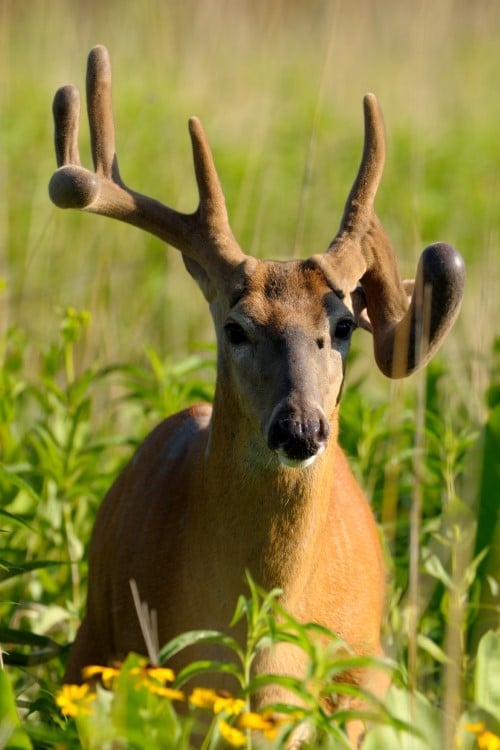
When a buck has a drop tine, they have what we call non-typical antlers.
The fact that a buck usually has to reach a certain age in order to achieve a drop tine (if that is possible in its genetics) makes it an even rarer phenomenon.
This is especially true if they live in an area with high hunting pressure.
Does a Drop Tine Make a Deer Non-Typical?
Yes, a drop tine means that the deer is non-typical.
For a deer to be deemed typical, its antler tines must have their points in designated places where they are meant to be found.
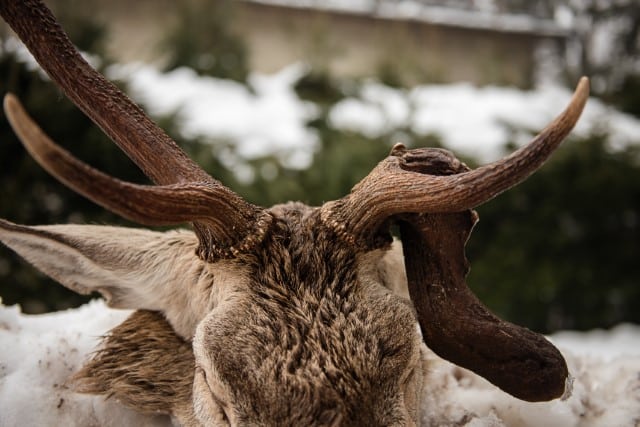
With a non-typical buck’s antlers, there will be something about them that makes them different from what is expected from the typical variety.
A drop tine is just one of the types of features you may see on a non-typical buck.
About Double Drop Tine Bucks
Double drop tine bucks are much more rare than deer with just one drop tine. Some hunters have found these prized animals.
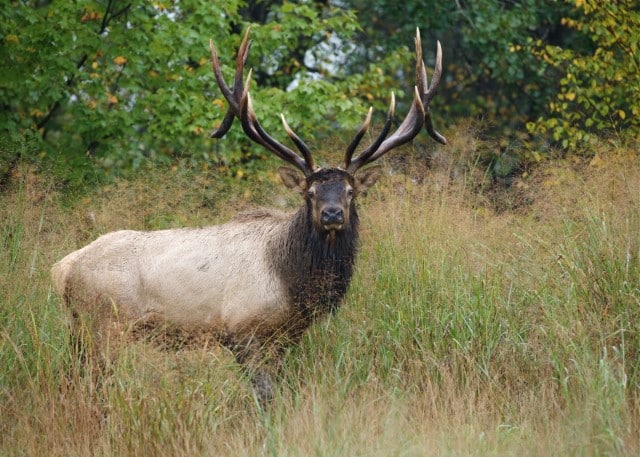
Double drop tines have the same kinds of causes as single drop tines. It is just much more unusual for two drop tines to develop.
As this is such a rare phenomenon, hunters often go through their whole careers never seeing or getting the chance to catch a double drop tine buck.
Should You Shoot a Drop Tine Buck?
If you see a drop tine buck, you can feel as free to shoot it as you would a typical deer. Many hunters will go ahead and shoot it, as a double tine buck is quite a prize.
This is especially true if the buck has other exceptional qualities, such as large size.
Non-Typical Bucks Are Prized
Most hunters know that prized bucks are often non-typical. Some of the most famous and admired deer captures in the United States have been non-typical deer.
An example is the Morin Buck. This animal had exceptionally developed non-typical brow tines.
It was also an enormous deer, which contributed to its prize quality. The Morin Buck was taken down in 1991.
Another of these animals is known as the Smith Buck. It was captured in British Columbia, and its tines were incredibly long. Its antler points were tiny yet numerous.
The Smith Buck was taken down in 1951. In 1976, a hunter found and captured the Klinger Buck.
This deer had unique antlers with a clustered appearance. It was found in Tennessee.
How to Hunt a Drop Tine Buck?
Remember, drop tine bucks are usually older. This means that they’re larger and more experienced than other bucks.
In other words, these deer are generally wilier and know how to evade hunters.
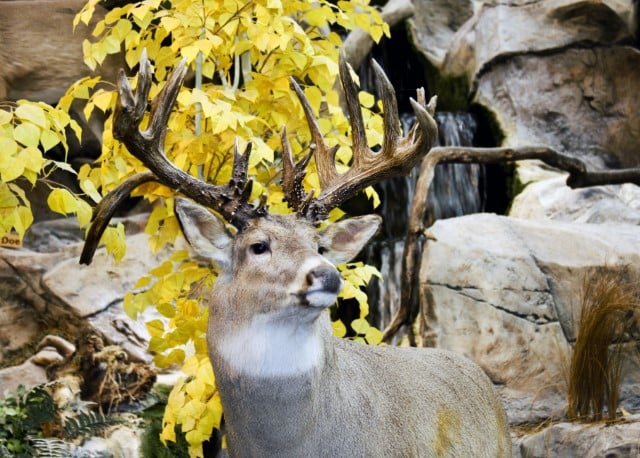
Generally, you’ll need a lot of hunting experience in order to hunt a drop tine buck. Give yourself plenty of time and learn about the habitat where you are seeking this animal.
Deer populations that have experienced intense hunting pressure in their area will be aware of the danger. They’ll know places they can go and methods of concealing themselves in their habitat for protection.
As there must be at least a six-inch drop in the drop tine, you will need to be able to get a sense of the distance when you look at the deer.
Of course, you can shoot the deer without being sure of the length of its drop tine, but once you’ve captured it, the deer won’t have the chance to continue growing the tine.
If you see a buck with a drop tine that is clearly shorter than six inches, you might consider not shooting and letting the deer continue growing its antlers. Then if you find it again, you may discover a prize-winning drop tine buck.
Now You Know What a Drop Tine Deer Is
As we’ve seen here, a deer with a drop tine is considered a non-typical deer. It is a prize for hunters, and being able to display drop tine antlers on your wall is a true accomplishment.
Now you understand drop tine deer, you can look for them on your next hunting adventure.

